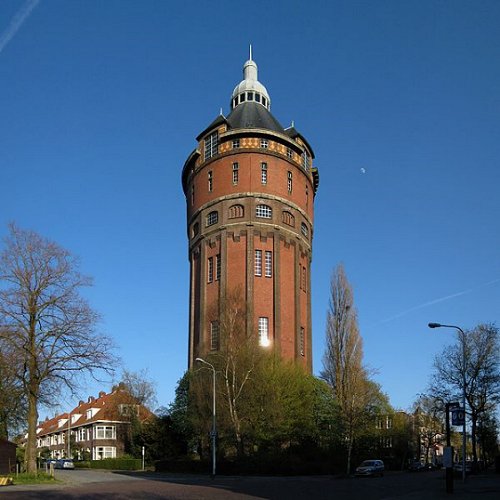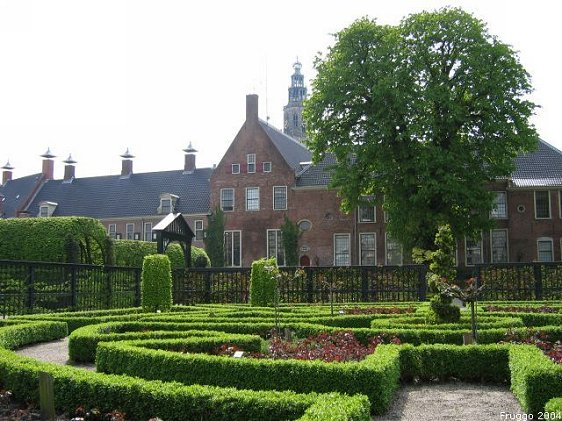
Emmakanaal, Groningen, Netherlands
Source: https://commons.wikimedia.org/wiki/File:Zonopemmakanaal.JPG
Author: MigGroningen

Groningen is the most populous city in northern Netherlands. The capital of the province of the same name, Groningen covers 83.69 sq km (32.3 sq mi) and has a population of 190,000 (2011 estimate). It is a major university town, with a student population of 50,000.

Water tower, built in Groningen in 1910-11
Source: https://commons.wikimedia.org/wiki/File:100423_Watertoren_Hofstede_de_Grootkade_Groningen_NL.jpg
Author: Wutsje

Groningen serves as the cultural and historical capital of northern Netherlands. Its written history goes back to 1040, though archaeological evidence pointed to human habitation going back to 3,950 BC, with the first permanent settlement dating to the 3rd century BC.
Groningen has developed into an important trading town in the 13th century. Its influence extended to language, with the Groningen dialect becoming the lingua franca of the region. Its university, Rijksuniversiteit Groningen, founded in 1614, is the second oldest in the Netherlands after the University of Leiden.

Prinsenhof, Groningen
Source: https://commons.wikimedia.org/wiki/File:Groningen_Prinsentuin_april04.jpg
Author: Fruggo

During World War II, many of the buildings in Groningen were badly damaged. A number of these are rebuilt. Today the old town has a number of museums illustrating its past as a merchantile town.
Visiting Groningen
From Amsterdam Schiphol Airport, you can take a direct train to Groningen. The journey should take about two hours.Places of Interest in Groningen
- Gebouw van de Gasunie
A modern high-rise building erected according to organic principles, right down to the choice of furnishing. - Groninger Museum
Museum on an island in the Verbindingskanaal was opened in 1994 to showcase archaeology and history. - Het Noordelijk Scheepvaartmuseum (Northern Museum of Water Transport)
Maritime museum celebrating the history of navigation and the usage of the canals for water transport. - Hortus Haren
Park in the suburb of Haren. The park was created in 1642. The 20-hectare park has several greenhouses for plants from different climatic zones. - Martinikerk (St Martin's Church)
This church dates from the 13th century. Although extended in the 15th century, it still bears traces of the original building. - Martinitoren (St Martin's Tower)
Remnant of the medieval tower that was damaged during the war. - Tabaksmuseum
Museum into the history of tobacco, located within the same building as Het Noordelijk Scheepvaartmuseum. - Prinsenhof
Historical building that originally housed a monastery, then the seat of the first Bishop of Groningen and the residence of the stadholder. It has a landscaped garden, Prinsenhoftuin, with a herb garden and rose garden.
Groningen is  on the map of the Netherlands
on the map of the Netherlands

Copyright © 2003-2025 Timothy Tye. All Rights Reserved.

 Go Back
Go Back